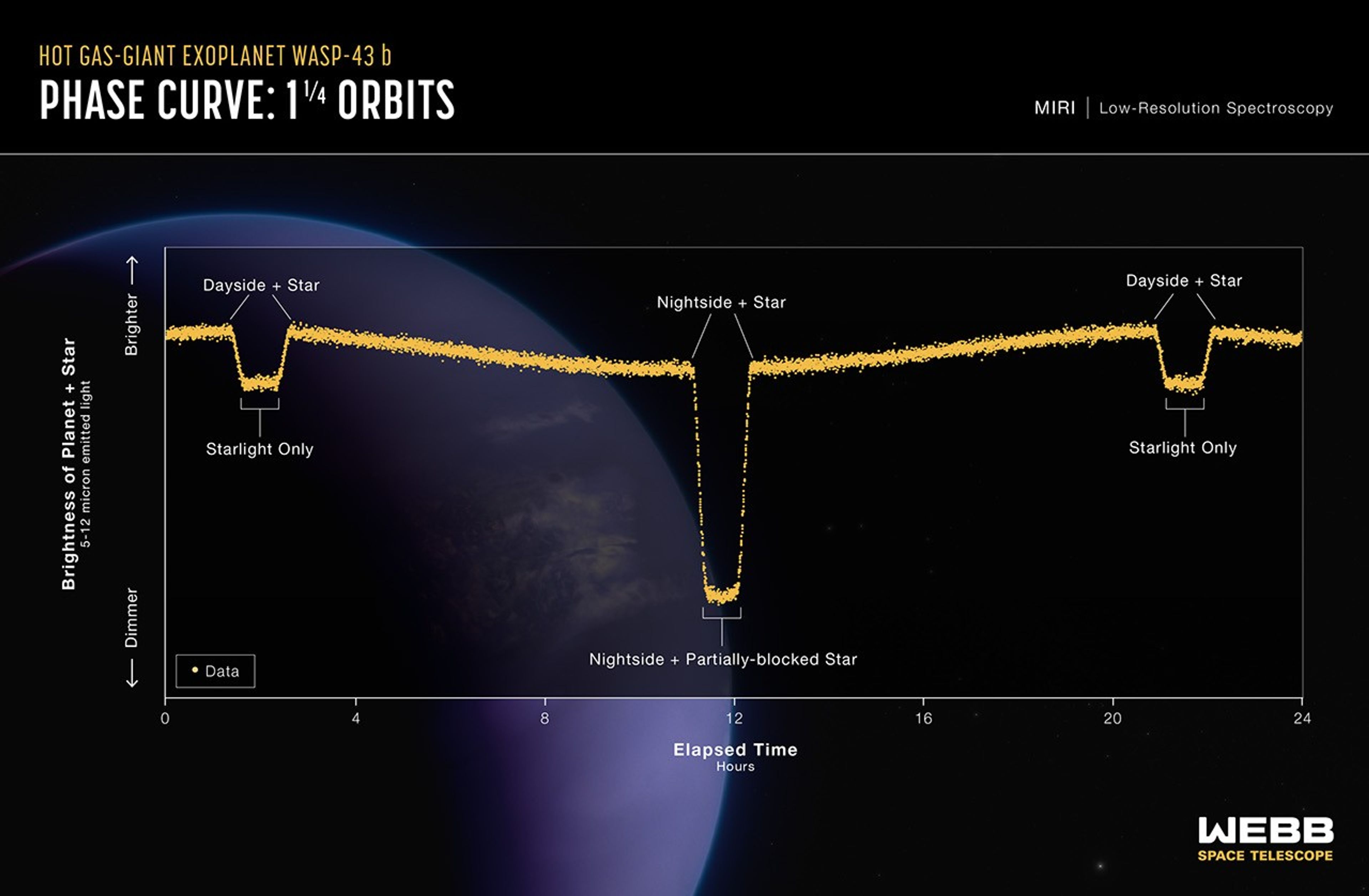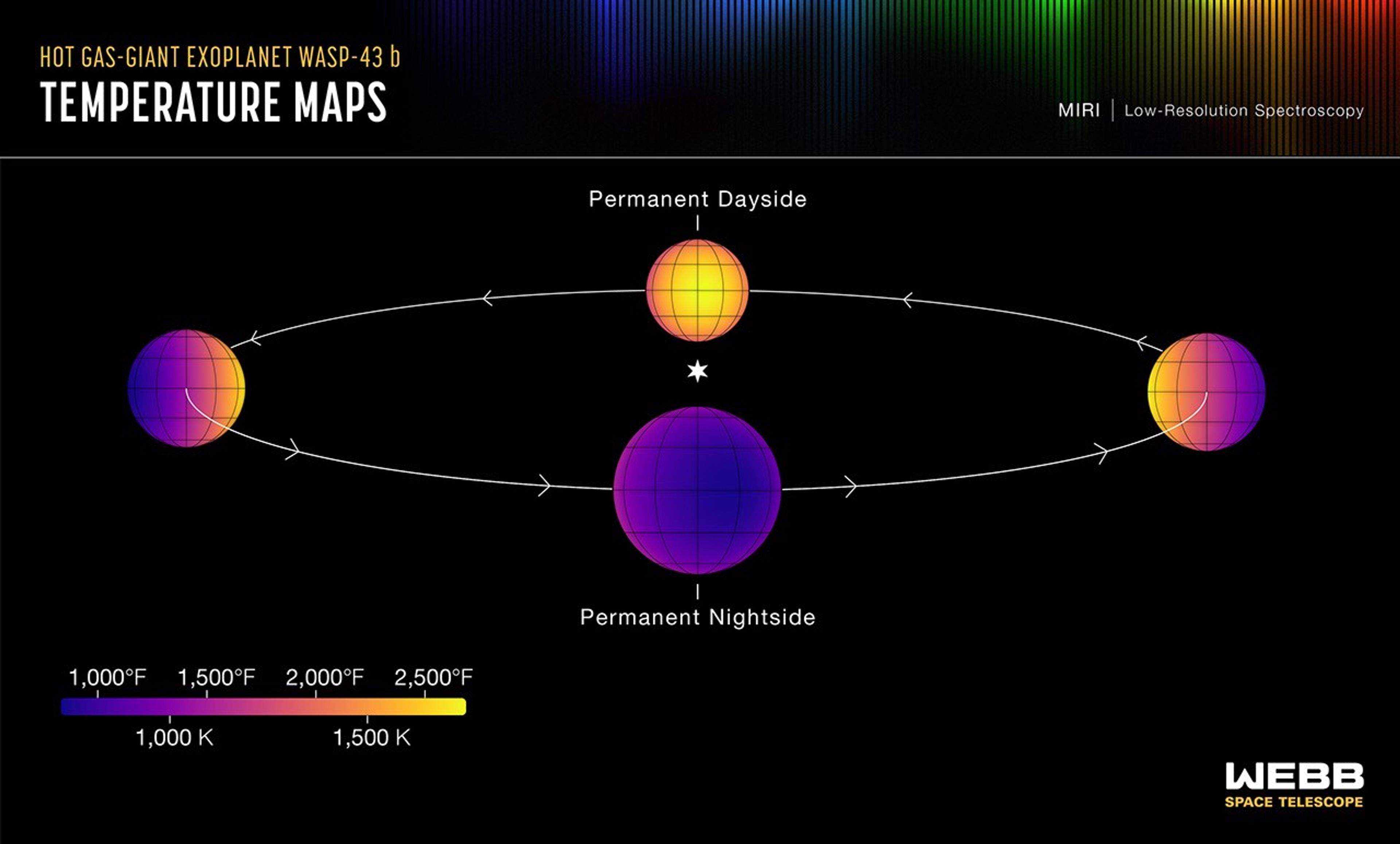1 min read
Hot Gas-Giant Exoplanet WASP-43 b (Rotating Global Temperature Map)
Global temperature map of the hot gas giant exoplanet WASP-43 b. This map was made based on the brightness of 5- to 12-micron mid-infrared light detected from the planet by MIRI (the Mid-Infrared Instrument) on NASA’s James Webb Space Telescope. In general, the hotter an object is, the more mid-infrared light it gives off.
Although the planet is far too close to the blinding light of its star to see on its own, it is possible to calculate its brightness by measuring the brightness of the star-planet system as a whole, and then subtracting the amount of light coming from the star (measured when the planet is behind the star).
Webb was able to measure each side of the planet by observing over an entire 19.5-hour orbit. The planet is tidally locked, which means that its rotation rate is the same as its orbital period, so different sides rotate into view as the planet moves around the star.
The temperature map shows that the nightside is probably covered in thick, high clouds. Clouds prevent some of the infrared energy from escaping to space, making the nightside appear cooler that it would if there were no clouds.
- Release DateApril 30, 2024
- Science ReleaseNASA’s Webb Maps Weather on Planet 280 Light-Years Away
- CreditVideo: Thomas Muller (MPIA)
Related Images & Videos

Hot Gas-Giant Exoplanet WASP-43 b (Artist's Concept)
This artist’s concept shows what the hot gas-giant exoplanet WASP-43 b could look like. WASP-43 b is a Jupiter-sized planet circling a star roughly 280 light-years away, in the constellation Sextans. The planet orbits at a distance of about 1.3 million miles (0.014 astronomical...

Hot Gas-Giant Exoplanet WASP-43 b (MIRI Phase Curve)
This light curve shows the change in brightness of the WASP-43 system over time as the planet orbits the star. This type of light curve is known as a phase curve because it includes the entire orbit, or all phases of the planet. Because it is tidally locked, different sides of...

Hot Gas-Giant Exoplanet WASP-43 b (Temperature Maps)
This set of maps shows the temperature of the visible side of the hot gas-giant exoplanet WASP-43 b, as the planet orbits its star. The temperatures were calculated based on more than 8,000 brightness measurements of 5- to 12-micron mid-infrared light detected from the...
Share
Details
Laura Betz
NASA’s Goddard Space Flight Center
Greenbelt, Maryland
laura.e.betz@nasa.gov
Thomas Muller (MPIA)





























